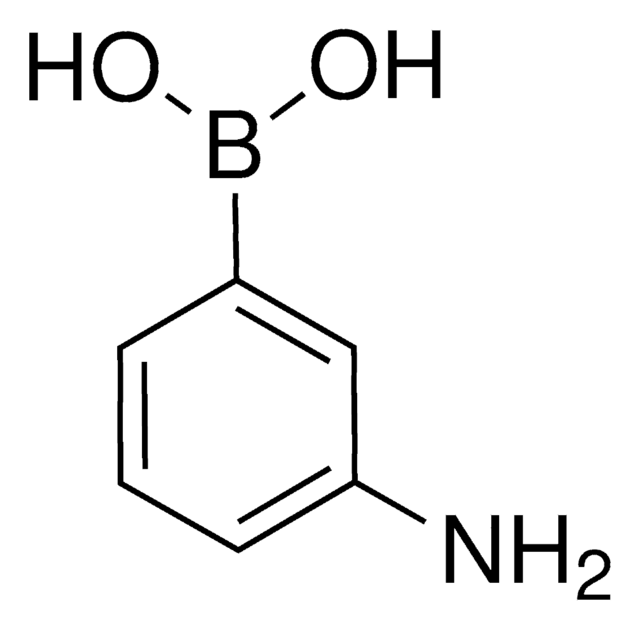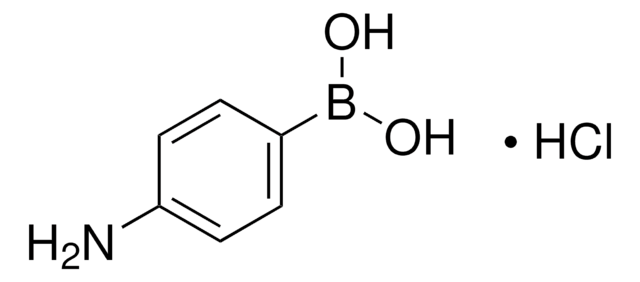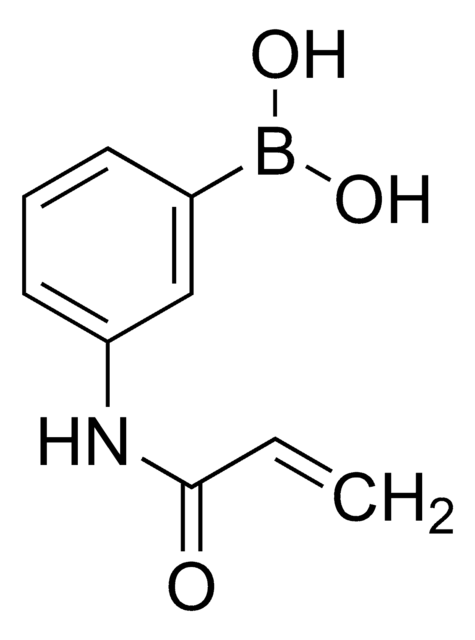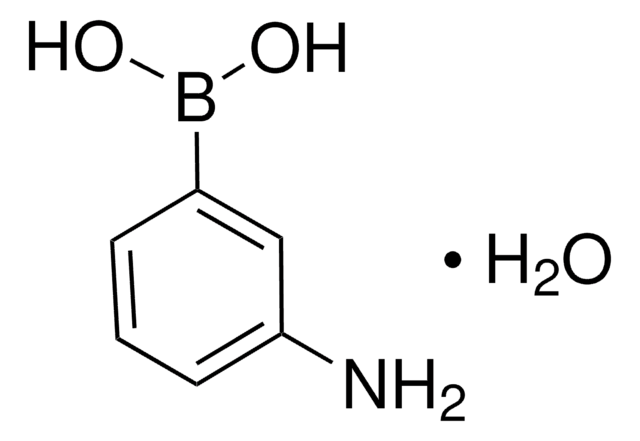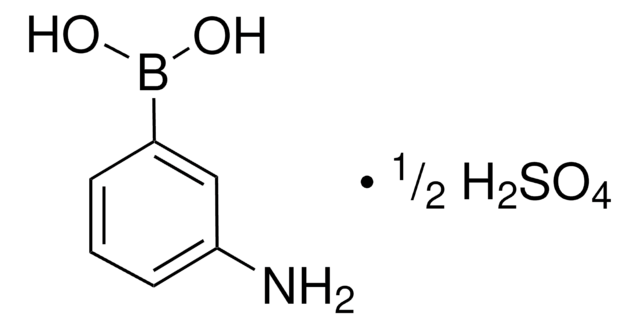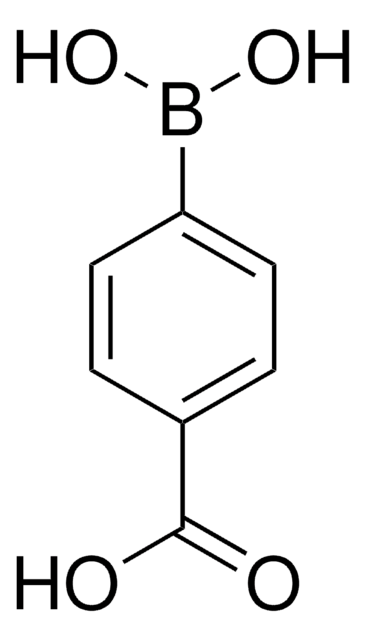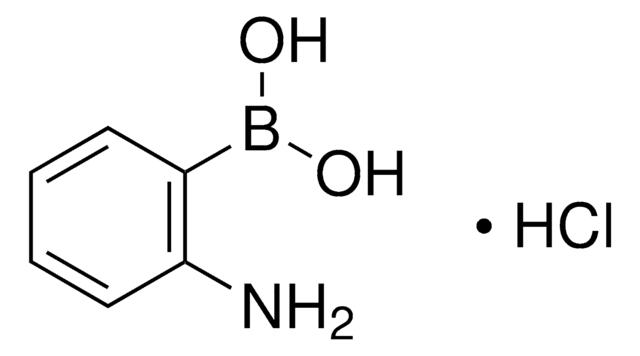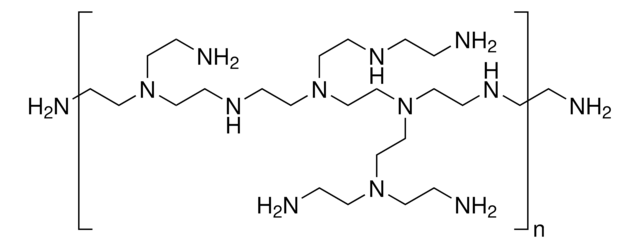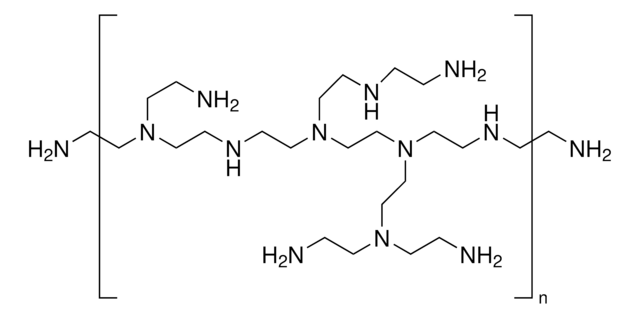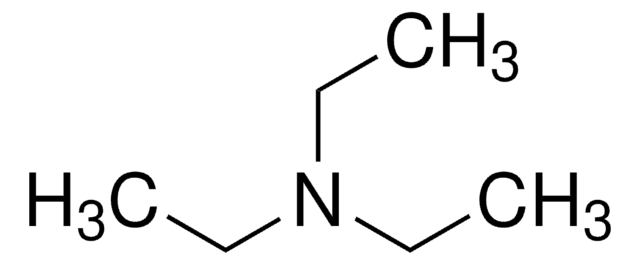410705
3-Aminophenylboronic acid hydrochloride
98%
Synonym(s):
(m-Aminophenyl)boronic acid hydrochloride, 3-Aminobenzeneboronic acid hydrochloride
Sign Into View Organizational & Contract Pricing
All Photos(1)
About This Item
Linear Formula:
H2NC6H4B(OH)2 · HCl
CAS Number:
Molecular Weight:
173.41
EC Number:
MDL number:
UNSPSC Code:
12352103
PubChem Substance ID:
NACRES:
NA.22
Recommended Products
Quality Level
Assay
98%
form
powder
SMILES string
Cl.Nc1cccc(c1)B(O)O
InChI
1S/C6H8BNO2.ClH/c8-6-3-1-2-5(4-6)7(9)10;/h1-4,9-10H,8H2;1H
InChI key
QBMHZZHJIBUPOX-UHFFFAOYSA-N
General description
3-Aminophenylboronic acid hydrochloride is a boronic acid derivative that is commonly used as a reagent in Suzuki-Miyaura coupling reactions, where it can be used to form C-C bonds by the reaction with aryl or vinyl halides. It can also be used in other cross-coupling reactions, such as copper-catalyzed coupling reactions, as well as in palladium-free cross-coupling reactions.
Application
3-Aminophenylboronic acid hydrochloride was used as a key reagent used in the synthesis of the boronic acid ester starting material, which is subsequently converted to the cyclobutene precursor through a Heck coupling reaction. It is also used as a boronic acid source in the synthesis of boronate-functionalized monomers. These monomers are further used in the preparation of reproducible and high-quality polymer films.
Signal Word
Warning
Hazard Statements
Precautionary Statements
Hazard Classifications
Eye Irrit. 2 - Skin Irrit. 2 - STOT SE 3
Target Organs
Respiratory system
Storage Class Code
11 - Combustible Solids
WGK
WGK 3
Flash Point(F)
Not applicable
Flash Point(C)
Not applicable
Personal Protective Equipment
dust mask type N95 (US), Eyeshields, Gloves
Choose from one of the most recent versions:
Already Own This Product?
Find documentation for the products that you have recently purchased in the Document Library.
Na Wu et al.
Nanoscale, 12(42), 21687-21694 (2020-10-24)
High-performance electrocatalysts for the methanol oxidation reaction (MOR) are the key to advance the application of direct methanol fuel cells. Pt-Based electrocatalysts for the MOR are limited due to their high cost, low stability and poor resistance to carbon monoxide
Elita Montanari et al.
Macromolecular bioscience, 16(12), 1815-1823 (2016-10-14)
Nanoparticles based on hyaluronic acid (HA) are designed to deliver tannic acid (TA) as an antimicrobial agent. The presence of HA makes these particles potentially useful to target bacteria that colonize cells presenting HA membrane receptors (e.g. CD44), such as
Chao Ding et al.
Chemistry (Weinheim an der Bergstrasse, Germany), 23(59), 14883-14888 (2017-08-05)
Stimuli-responsive polymer materials inspired by biological materials have invoked increasing research interest; however, they still suffer from limitations such as finite amplified responses and poor sensitivity of the unstimulated parts. Herein, a new strategy for creating H
Our team of scientists has experience in all areas of research including Life Science, Material Science, Chemical Synthesis, Chromatography, Analytical and many others.
Contact Technical Service